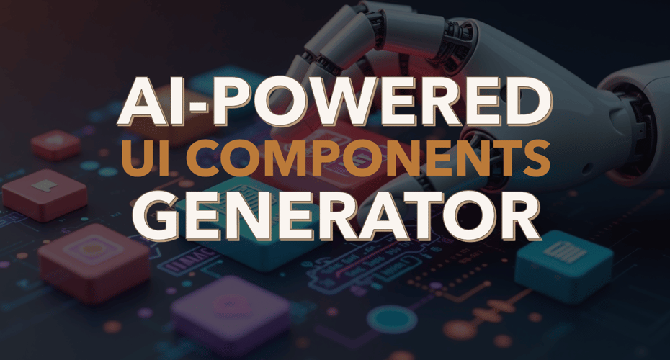Dev
1M
365

Image Credit: Dev
How to Build an AI-Powered UI Components Generator in Minutes (LangGraph, GPT-4, & Stream Chat SDK)
- This article teaches how to build an AI-powered UI components generator using LangGraph, GPT-4, and Stream Chat SDK.
- The tutorial covers understanding AI agents and LangGraph AI agent structure, building UI components generator backend with Python, LangGraph, and GPT-4, and creating a Flask web server to handle frontend requests.
- It also includes building the UI components generator frontend with Next.js, TypeScript, and TailwindCSS, integrating the Stream Chat SDK to enable collaborative discussions and prompt generation in the chat interface.
- AI agents utilize LangGraph, an open-source framework, to generate clean UI components using HTML and Tailwind CSS through assembly line-like workflows.
- LangGraph AI agents structure includes customer orders, assembly lines (Graph), workstations (Nodes), conveyor belts (Edges), foreman (State), notebook (Memory), and mechanical engineer (Language Model).
- Prerequisites include basic React or Next.js knowledge and tools like Python, LangGraph, OpenAI API Key, Tavily AI, Stream Chat SDK, and Ace Code Editor.
- Backend setup involves creating a UI components generator, setting up the project, importing required libraries, configuring the graph, defining a system prompt, and setting up tools and Language Model.
- The Flask web server setup includes installing Flask and Flask Cors packages, setting up endpoints to handle UI components requests, and starting the server to handle frontend and backend interactions.
- Frontend setup involves creating UI components like ComponentPreview, CodeDisplay, VersionManager, and ComponentGenerator components to preview, edit, save version, and generate UI components based on user prompts.
- Integrating Stream Chat SDK added chat capabilities to the frontend, enabling collaborative discussions, prompting for UI components, and managing AI presence in the channel.
- The AI-powered Stream Chat SDK integration includes setting up a backend with methods to start and stop AI agents for a specific channel and testing the AI-powered chat interface functionality.
Read Full Article
21 Likes
For uninterrupted reading, download the app